Are you considering a roof replacement or building a new home? A composition roof could be the perfect solution for you! These popular and versatile roofs offer a variety of benefits, including cost-effectiveness, durability, and an extensive range of design options. In this comprehensive guide, we will delve into everything you need to know about composition roofs, from their construction and types to their advantages, disadvantages, and maintenance requirements.
Key Takeaways
- Composition roofs are a multi-layered system composed of asphalt shingles, fiberglass mat and ceramic granules.
- They offer cost effectiveness, durability and design options with varying levels of lifespan depending on type.
- Maintenance such as regular inspections, cleaning and repairs should be performed to ensure longevity.
Understanding Composition Roofs: Materials and Construction
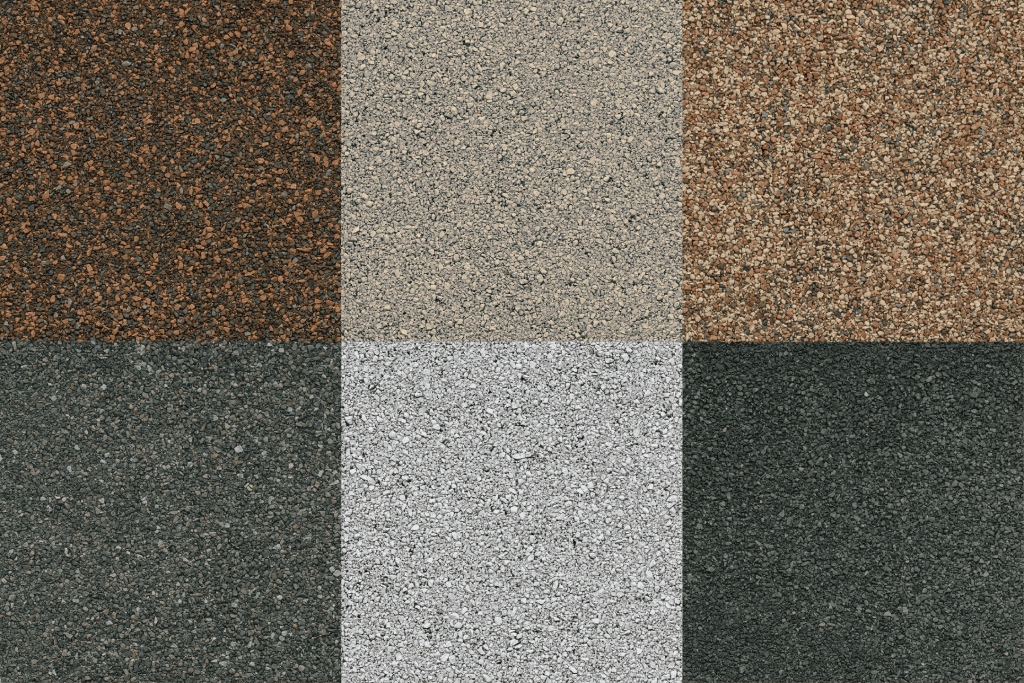
A composition shingle roof is a multi-layered roofing system that primarily consists of composite shingles, which are made of asphalt shingles, fiberglass mat, and ceramic granules. These materials work together to create a durable and versatile composition roofing, suitable for various climates and architectural styles.
Understanding the key components of composition roofs and their performance contributions is paramount as you weigh your options for a new roof or replacement.
Asphalt Shingles
Playing a vital role in composition roofs, asphalt shingles act as the primary weatherproofing and water-resistant layer. They come in several varieties, such as:
- Traditional shingles
- Architectural shingles
- Premium shingles
- Performance shingles
- Luxury shingles
These options offer a wide selection of design options to suit your preferences.
Asphalt shingles are known for their weather resistance, fire resistance, wind resistance, and cost-effectiveness, making them a popular choice for not only asphalt roofs and composite roofs, but also asphalt shingle roofs.
Fiberglass Mat
Ceramic Granules
Types of Composition Roof Shingles
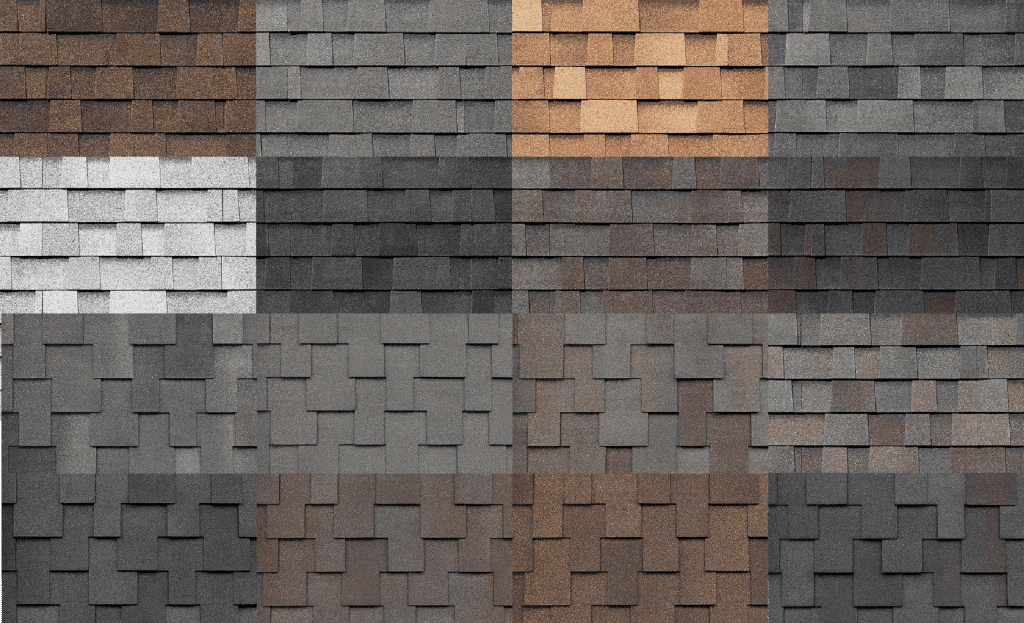
Composition roof shingles come in three primary types: 3-tab shingles, architectural shingles, and luxury shingles. Understanding the differences in durability, appearance, and cost among these types is vital for making an informed decision for your roofing project.
We will now examine the unique characteristics of each of these shingle types.
3-Tab Shingles
3-tab shingles are the most economical option for composition roofs, featuring a single layer of material and a uniform style that provides a neat, refined look. These shingles are thinner than architectural shingles and generally come with a warranty spanning between 20 and 30 years. While their simple design and lower cost make them an attractive choice for budget-conscious homeowners, they may not offer the same level of durability and lifespan as other shingle types.
Architectural Shingles
Architectural shingles, also known as dimensional or laminate shingles, offer a more aesthetically pleasing and longer-lasting option than 3-tab shingles. These shingles consist of multiple layers of asphalt-coated fiberglass, giving them a more three-dimensional appearance and a lifespan of up to 30 years.
Architectural shingles come in various colors and designs, allowing you to customize the look of your roof to match your home’s style.
Luxury Shingles
Luxury shingles provide the highest level of durability and aesthetic appeal among composition roof shingles. These shingles are made from a combination of asphalt and other materials, resulting in a heavier and more luxurious appearance that can mimic the look of natural materials like slate or cedar.
While luxury shingles come with a higher price tag compared to other composition shingle types, their exceptional durability and impressive appearance make them an attractive option for homeowners seeking a premium roofing solution.
Advantages and Disadvantages of Composition Roofs
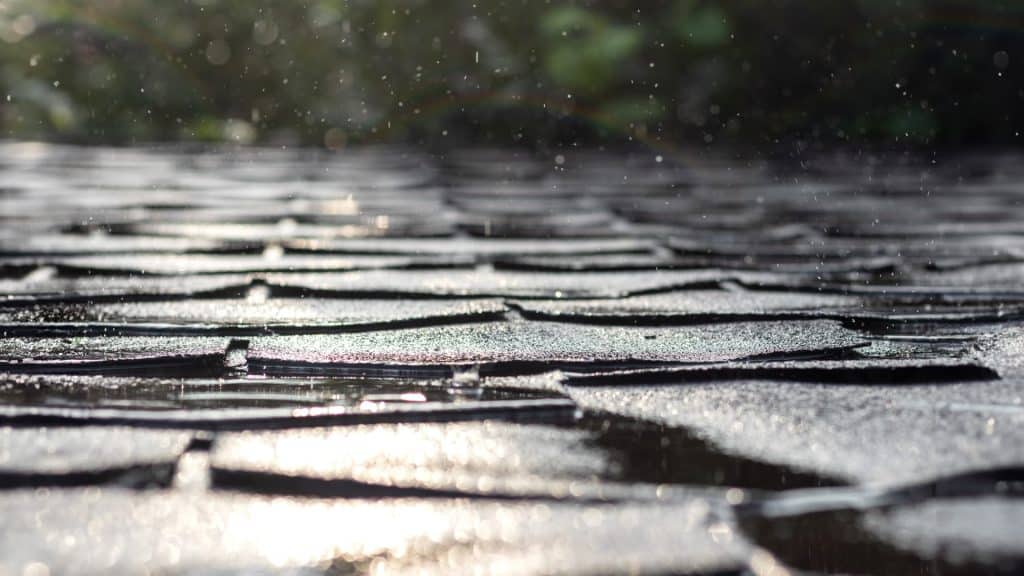
Composition roofs offer several advantages and disadvantages that should be considered when choosing the right roofing material for your home. While they are generally cost-effective, durable, and available in various designs, they also come with some drawbacks, such as susceptibility to weather damage and the need for regular maintenance.
A detailed overview of the pros and cons of composition roofs will aid you in making an informed decision.
Pros of Composition Roofs
One of the most significant advantages of composition roofs is their cost-effectiveness. They offer the following benefits:
- Made from easily accessible and affordable materials like asphalt and fiberglass
- Lightweight nature simplifies installation, further reducing costs
- Known for their durability, withstanding various weather conditions
- Lasting for 20 to 25 years on average
The wide selection of design options, including different shingle types and colors, also adds to the appeal of composition roofs.
Cons of Composition Roofs
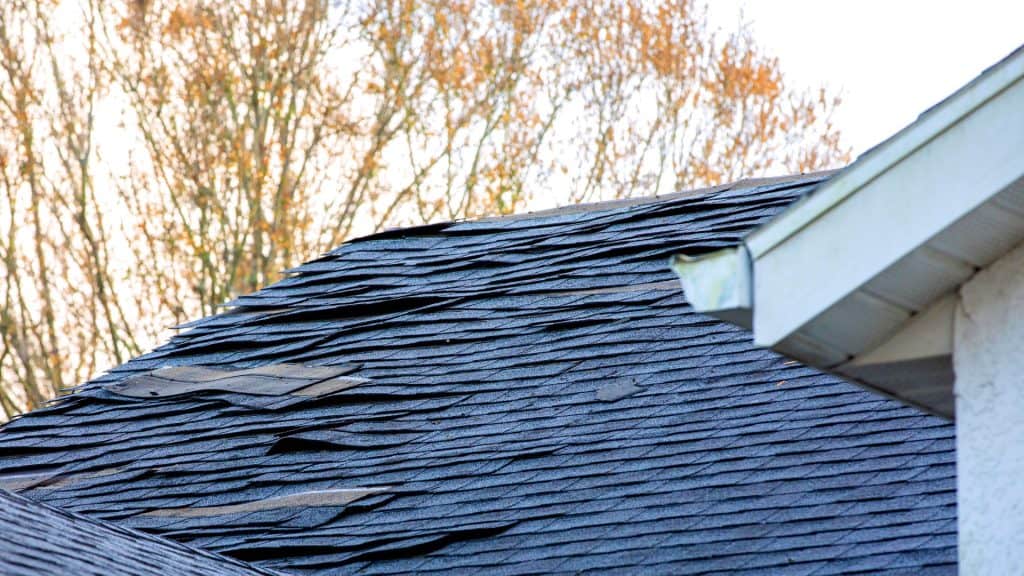
Despite their many advantages, composition roofs also have some drawbacks. They are susceptible to weather damage, such as hailstones during a storm, brittleness at low temperatures, and potential damage from high winds. Additionally, composition roofs may not be as fire-resistant as other roofing materials, though some level of fire resistance is present.
Lastly, regular maintenance, including inspections, cleaning, and repairing damaged shingles, is necessary to prolong the lifespan and maintain the appearance of composition roofs.
Cost Factors and Installation of Composition Roofs
Various factors like the type of shingle selected, the size of the roof, and the complexity of the installation determine the cost of a composition roof. These factors should be taken into account when budgeting for your roofing project.
Additionally, while the installation process for composition roofs is relatively straightforward, it is crucial to hire experienced professionals to ensure proper installation and longevity of your roof.
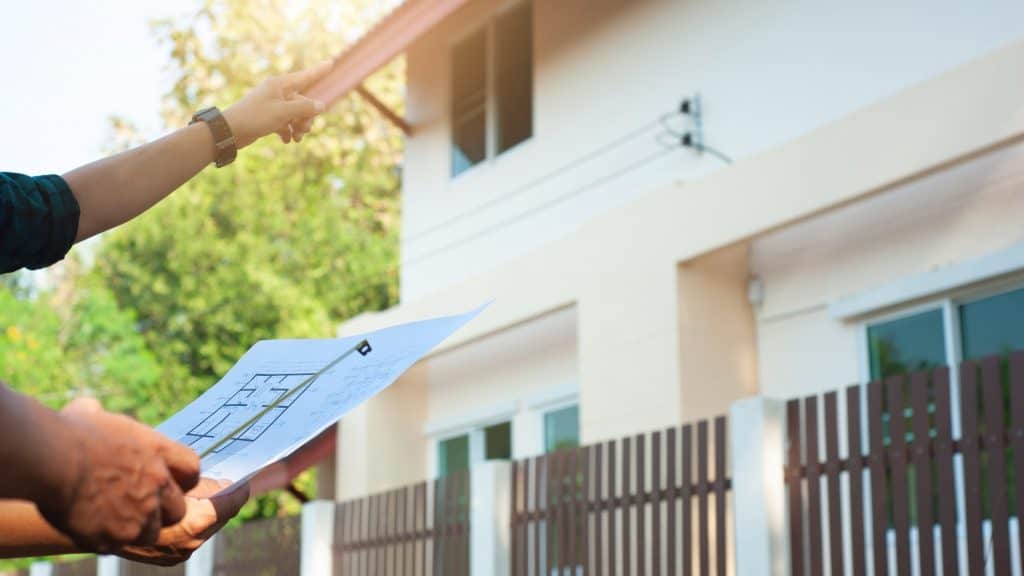
Determining the Cost of a Composition Roof
When determining the cost of a composition roof, factors such as shingle type, roof size, and labor costs come into play. For example, architectural shingles may cost more than 3-tab shingles due to their increased durability and aesthetic appeal.
The size of your roof also affects the overall cost, as larger roofs require more materials and labor. Furthermore, the complexity of the roof design, along with the geographical location, can impact labor and material costs.
Installation Process
- Removing the old roof
- Inspecting and replacing roof decking if necessary
- Installing drip edge
- Covering the roof decking with a moisture barrier
- Waterproofing the valleys
- Applying starter shingles
- Installing the composition shingles
Comparing Composition Roofs to Other Roofing Options
Other roofing options such as wood shakes, slate tiles, and metal roofs provide alternatives to composition roofs. As these alternatives have varied cost, durability, and maintenance requirements, comparing them with composition roofs can help determine the option that best aligns with your needs and preferences, including the possibility of a composition roof replacement.
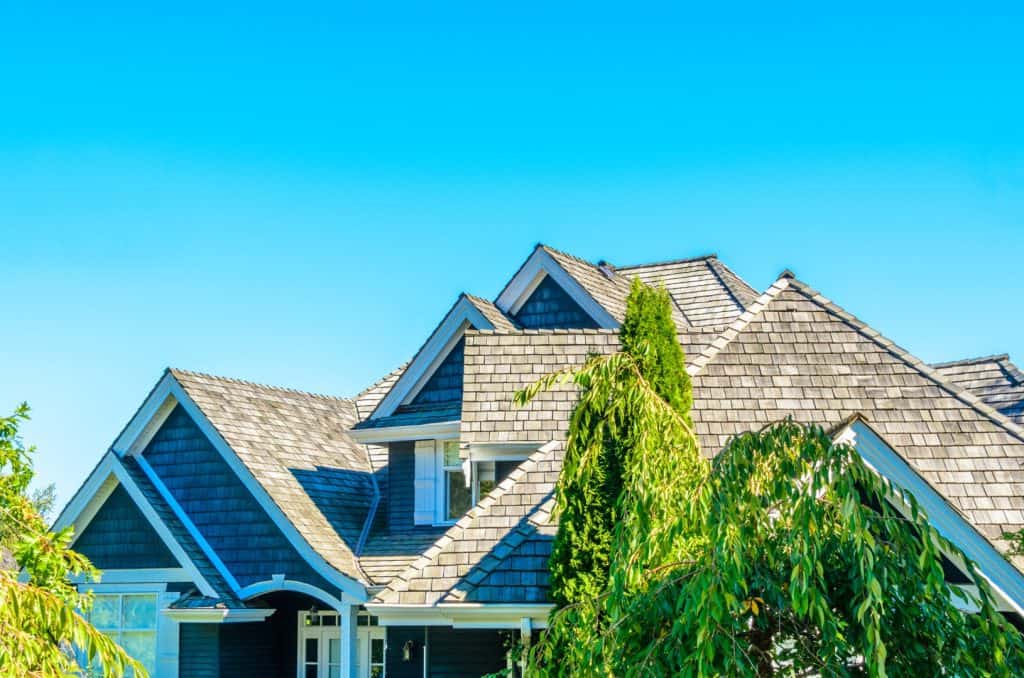
Wood Shakes
Wood shakes offer a natural and rustic appearance that may be desirable for some homeowners. However, they generally require more maintenance and have a shorter lifespan compared to composition roofs. Additionally, wood shakes can be more expensive than composition roofs. Here are some key points to consider:
- Wood shakes require regular maintenance, including periodic cleaning, sealing, and repairs.
- They are more susceptible to damage from weather, insects, and rot.
- The lifespan of wood shakes is typically around 20-30 years, whereas composition roofs can last 30-50 years.
Slate Tiles
Slate tiles provide a high-end, classic look and are known for their durability and longevity. However, they are more expensive and heavier than composition roofs, which may require additional reinforcement of the roof structure.
Metal Roofs
Metal roofs boast the following features:
- Excellent durability
- Low maintenance requirements
- Sleek, modern appearance
- Long lifespan of between 40 and 70 years
These qualities make metal roofs an attractive option for some homeowners.
However, metal roofs may not suit all aesthetic preferences and can be more expensive than composition roofs.
Maintenance Tips for Composition Roofs
Regular Inspections
Conducting regular inspections is essential for identifying potential issues and preventing costly repairs. It is recommended to inspect your composition roof at least twice a year, typically in the autumn and spring.
By catching problems early, you can address them before they escalate, saving you time and money in the long run.
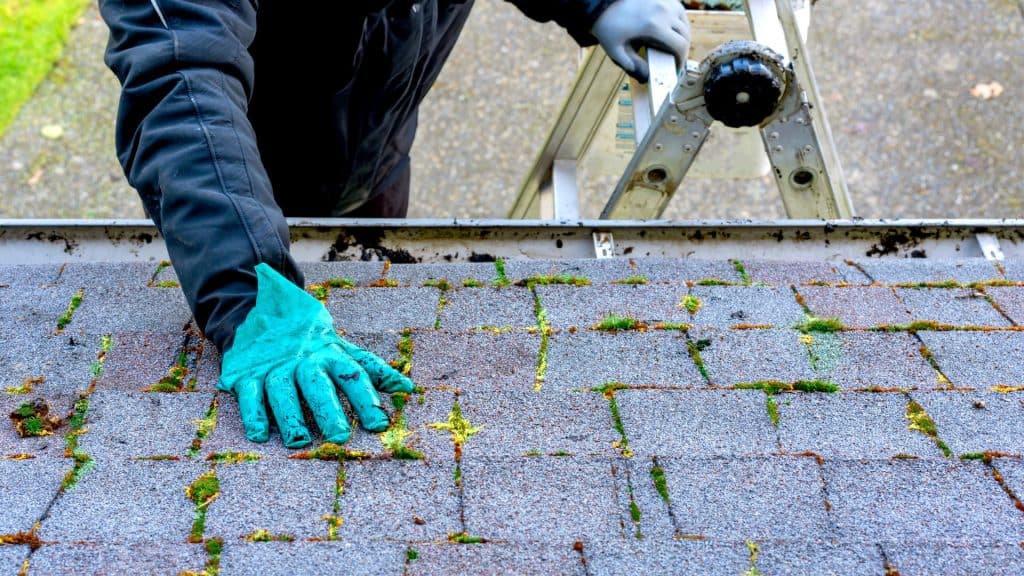
Cleaning and Debris Removal
Cleaning and debris removal are crucial for preventing the buildup of algae, moss, and other damaging elements on your composition roof. It is recommended to clear your roof of debris at least biannually, ensuring that valleys, snow guards, gutters, and the area behind the chimney are free from accumulated dirt and debris.
A simple solution of dish soap and water can be used to clean the roof and remove any algae or stains.
Repairing Damaged Shingles
Repairing damaged shingles promptly is vital for maintaining the integrity of your composition roof and preventing leaks. Common signs of damage include:
- Missing shingles
- Curling or cupping
- Cracked or broken shingles
- Granule loss
- Blistering or bubbling
- Discoloration or staining
By addressing these issues as they arise and replacing damaged shingles as needed, you can ensure the continued performance and longevity of your composition roof, ultimately avoiding a full roof replacement.
Summary
In conclusion, composition roofs are an excellent choice for homeowners seeking a cost-effective, durable, and versatile roofing option. With a range of shingle types, design options, and maintenance requirements, composition roofs can be tailored to suit various preferences and budgets. By understanding the materials, construction, and maintenance involved in composition roofs, you can make an informed decision on the best roofing option for your home and enjoy a long-lasting, attractive roof for years to come.
Frequently Asked Questions
What is composite roofing?
Composite roofing is a composite of man-made materials like fiberglass, recycled paper products, and asphalt that is also known as asphalt shingles. It is fire-resistant and doesn’t have problems with moisture, making it very safe and reliable.
Shingles and composition are interchangeable terms for asphalt roofing material composed of fiberglass or organic felt impregnated with asphalt and covered with mineral granules.
What is the difference between shingle and composition?
Shingles and composition are interchangeable terms for asphalt roofing material composed of fiberglass or organic felt impregnated with asphalt and covered with mineral granules.
How long do composition roofs last?
Composite shingles have a lifespan of between 40 and 50 years, making them longer-lasting than asphalt shingles which last between 20 and 30 years.
What are the components of roof material?
The components of roof material typically consist of an underlayment, shingles, hip & ridge cap, flashings, and a drip edge. Together, these components provide the structure and protection needed for a home’s roof.
How do composition roofs compare to other roofing options like wood shakes, slate tiles, and metal roofs in terms of cost and durability?
Composition roofs are more cost-effective and easier to install than other roofing materials, but they are generally not as durable or long-lasting.
